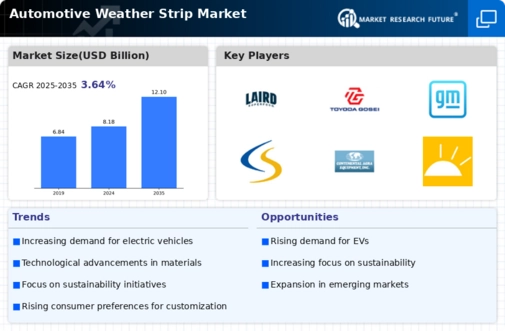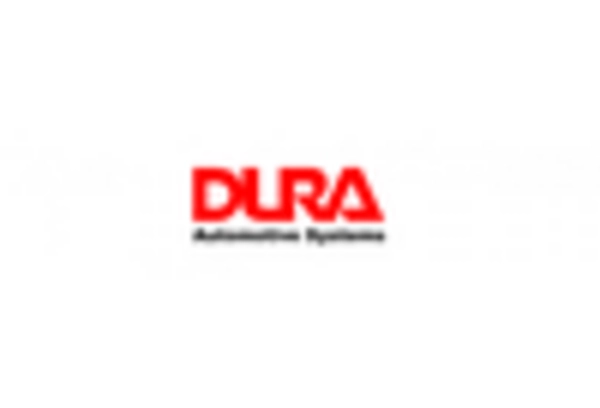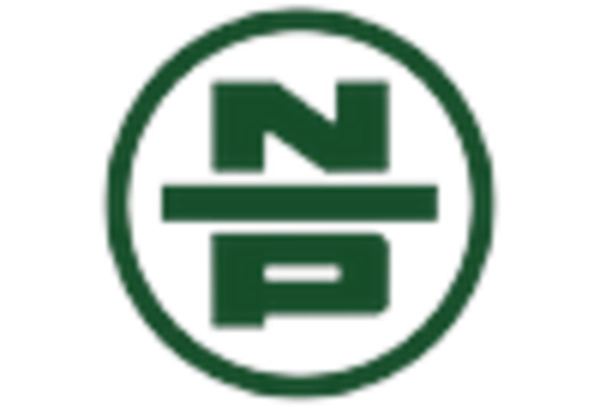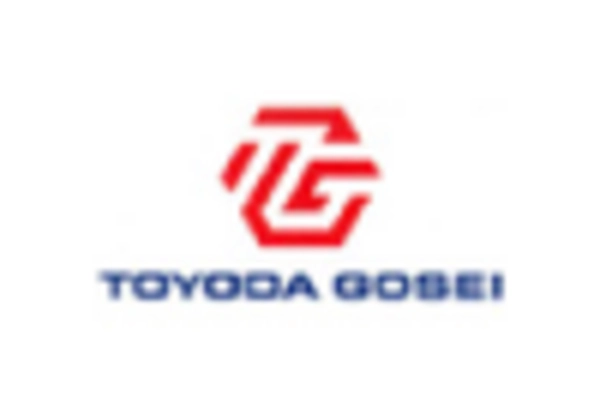Rising Vehicle Production
The Automotive Weather Strip Market is experiencing growth due to the increasing production of vehicles worldwide. As manufacturers ramp up production to meet consumer demand, the need for high-quality weather strips becomes paramount. In 2025, vehicle production is projected to reach approximately 90 million units, which directly correlates with the demand for weather strips. These components are essential for ensuring vehicle integrity, enhancing comfort, and providing insulation against environmental elements. Consequently, the rising vehicle production is a significant driver for the Automotive Weather Strip Market, as it necessitates the incorporation of durable and efficient weather sealing solutions in new models.
Stringent Regulatory Standards
The Automotive Weather Strip Market is influenced by stringent regulatory standards aimed at improving vehicle safety and environmental performance. Regulations concerning emissions and noise reduction have prompted manufacturers to adopt advanced weather strip technologies. For instance, the implementation of regulations that limit noise pollution has led to an increased focus on soundproofing materials, which are integral to weather strips. As these standards evolve, manufacturers are compelled to innovate and enhance their weather strip offerings, thereby driving growth in the Automotive Weather Strip Market. The compliance with these regulations not only ensures market access but also enhances the overall quality of vehicles.
Growing Electric Vehicle Adoption
The Automotive Weather Strip Market is poised for growth due to the increasing adoption of electric vehicles (EVs). As the automotive landscape shifts towards electrification, manufacturers are focusing on developing weather strips that cater specifically to the unique requirements of EVs. These vehicles often require specialized sealing solutions to manage battery cooling systems and enhance energy efficiency. The projected rise in EV sales, expected to reach 30% of total vehicle sales by 2030, indicates a substantial opportunity for the Automotive Weather Strip Market. This trend underscores the need for innovative weather sealing solutions that align with the evolving demands of the automotive sector.
Increased Focus on Vehicle Comfort
Consumer preferences are shifting towards enhanced vehicle comfort, which is a key driver for the Automotive Weather Strip Market. As consumers demand quieter and more comfortable rides, the role of weather strips in achieving these attributes becomes increasingly critical. Weather strips contribute to noise reduction, temperature control, and overall cabin comfort. In 2025, it is anticipated that the demand for luxury vehicles, which often feature superior weather sealing solutions, will rise significantly. This trend indicates a growing market for high-performance weather strips, as manufacturers strive to meet consumer expectations for comfort and quality in their vehicles.
Technological Innovations in Materials
The Automotive Weather Strip Market is benefiting from technological innovations in materials used for weather sealing. Advances in polymer technology and the development of new composite materials have led to the creation of weather strips that offer improved durability, flexibility, and resistance to environmental factors. These innovations not only enhance the performance of weather strips but also contribute to weight reduction in vehicles, which is a growing concern among manufacturers. As the automotive industry continues to evolve, the integration of advanced materials into weather strip production is likely to drive growth in the Automotive Weather Strip Market, as manufacturers seek to improve vehicle efficiency and performance.


















Leave a Comment